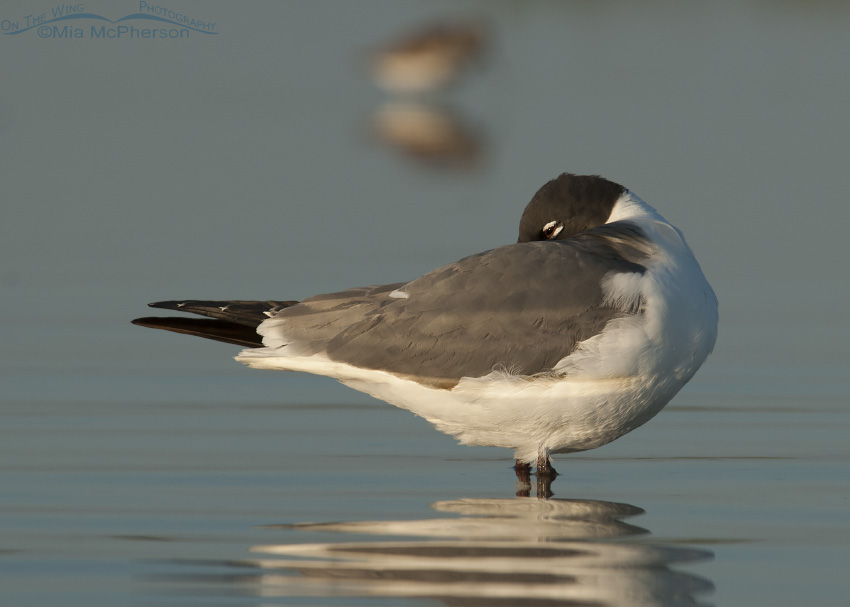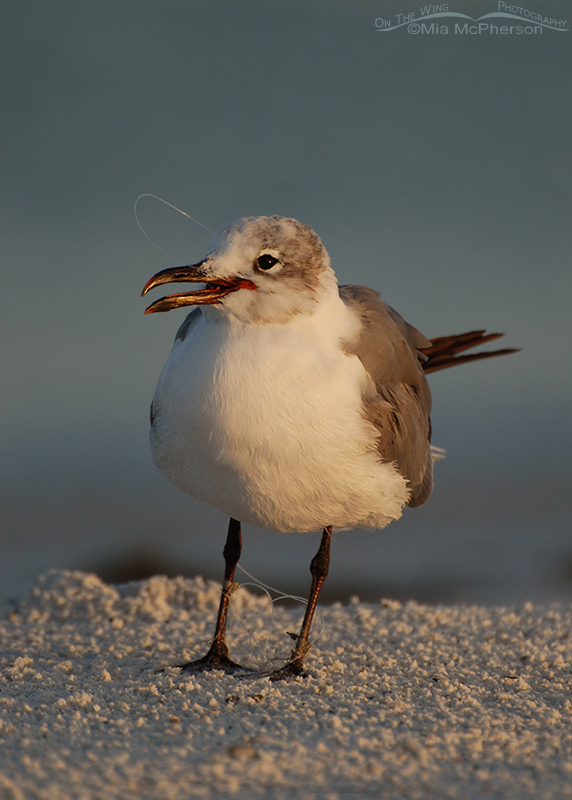
Laughing Gull Images, Facts and Information:
Leucophaeus atricilla
- Laughing Gulls are medium gulls with light gray backs, white underparts, black wingtips with white markings and narrow white eye-arcs. Their heads turn black during breeding season and their bills and webbed feet turn dark red.
- Some Laughing Gulls are year round residents and some are short distance migrators.
- Laughing Gulls are a coastal species and are not found inland very often. They nest on sandy beaches, saltmarshes and spoil islands.
- Laughing Gulls eat invertebrates, worms, insects, snails, crabs, crab eggs, carrion, garbage, fish and will readily accept handouts from people.
- Laughing Gulls lay 1 to 4 eggs which hatch in 20 days. Both sexes incubate and they are monogamous.
- A group of gulls can be called a “squabble”, “flotilla”, “screech” and “scavenging” of gulls.
- Laughing Gulls can live more than 22 years.
I hope you enjoy viewing my Laughing Gull photos.
Pair of Laughing Gulls, one calling
Title: Pair of Laughing Gulls, one calling
Location: Fort De Soto County Park, Pinellas County, Florida
Date: 4/25/2008
Shy Laughing Gull? I think not!
Title: Shy Laughing Gull? I think not!
Location: Fort De Soto County Park, Pinellas County, Florida
Date: 4/23/2008
Nonbreeding Laughing Gull with a Calico Shell
Title: Nonbreeding Laughing Gull with a Calico Shell
Location: Fort De Soto County Park, Pinellas County, FL
Date: 4/18/2008
Nonbreeding Laughing Gull and a Calico Shell
Title: Nonbreeding Laughing Gull and a Calico Shell
Location: Fort De Soto County Park, Pinellas County, FL
Date: 4/18/2008
Laughing Gull portrait
Title: Laughing Gull portrait
Location: Fort De Soto County Park, Pinellas County, Florida
Date: 4/4/2008
Laughing Gull with fishing line & hook in bill with feet tangled
Title: Laughing Gull with fishing line & hook in bill with feet tangled
Location: Fort De Soto County Park, Pinellas County, Florida
Date: 8/29/2007







